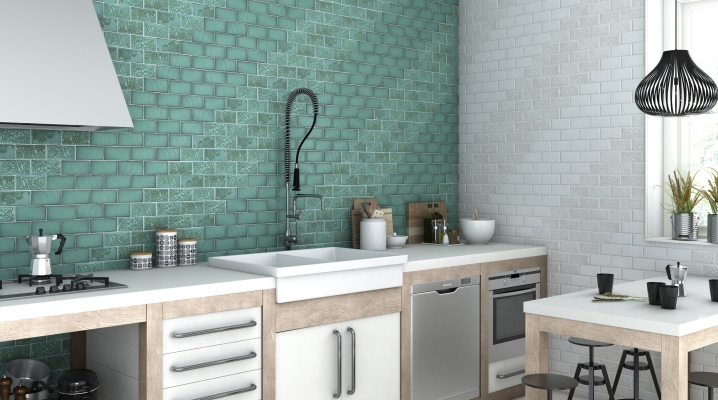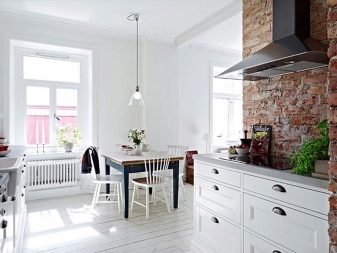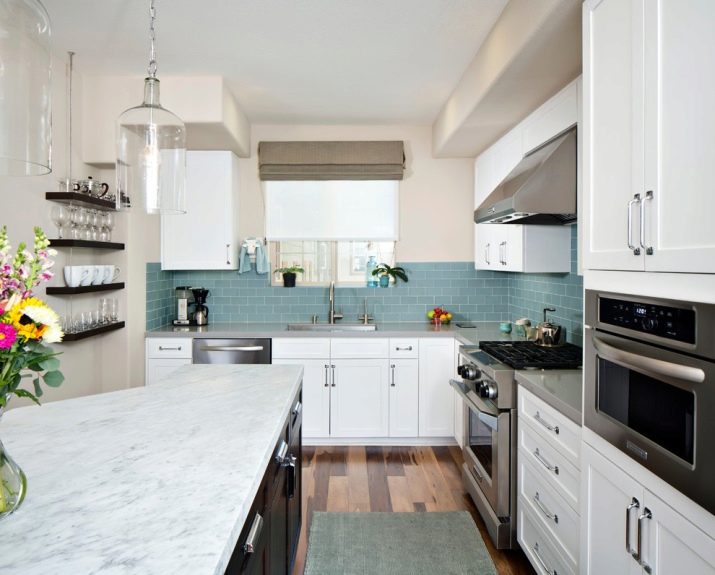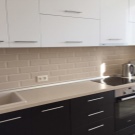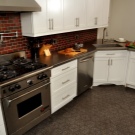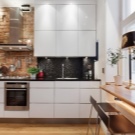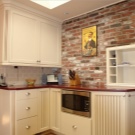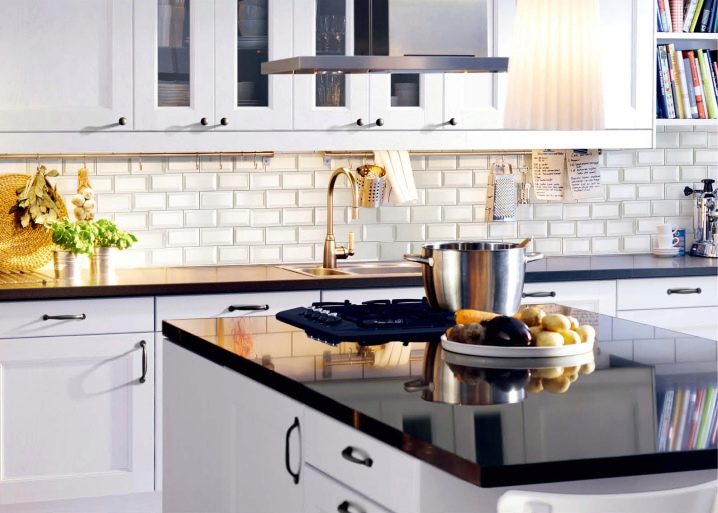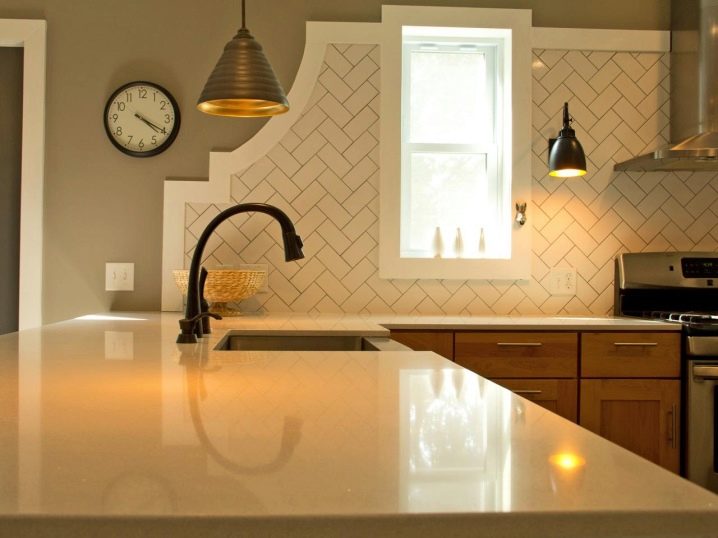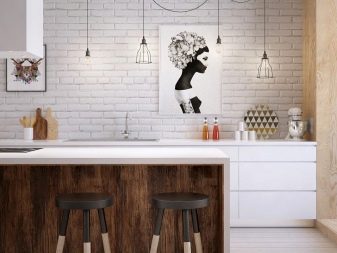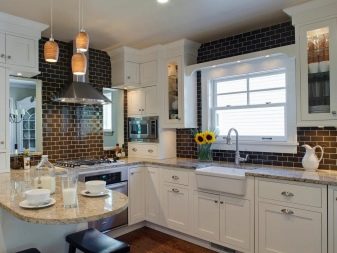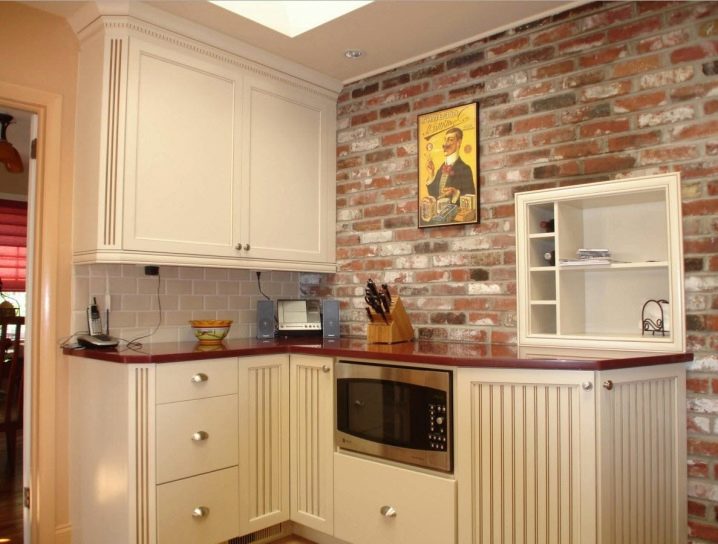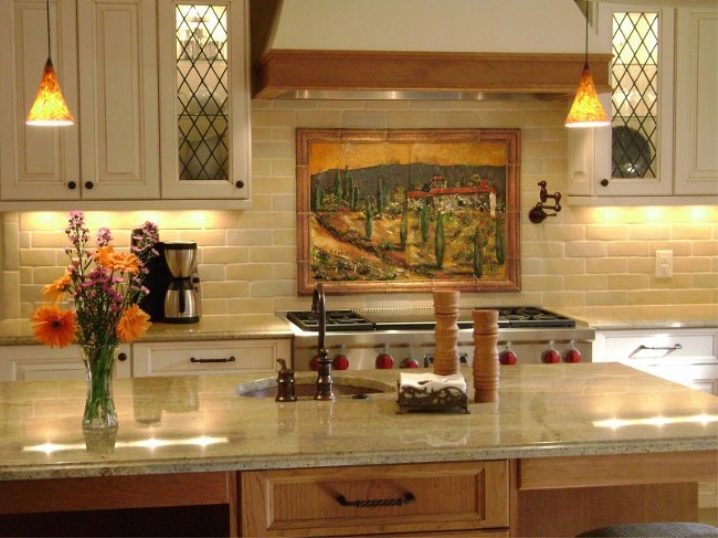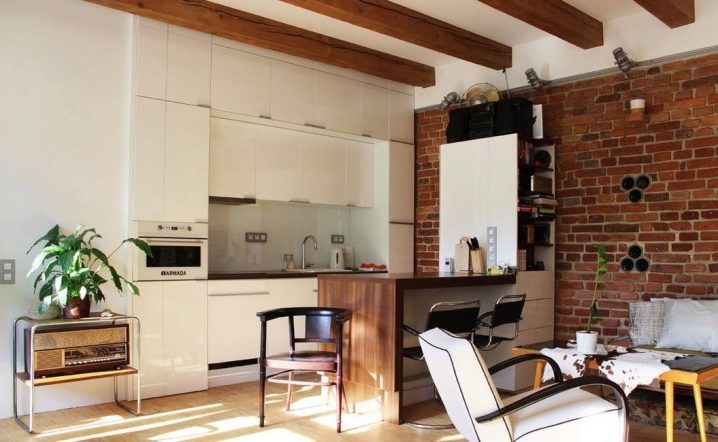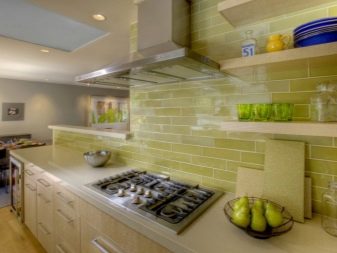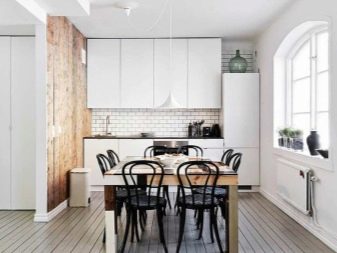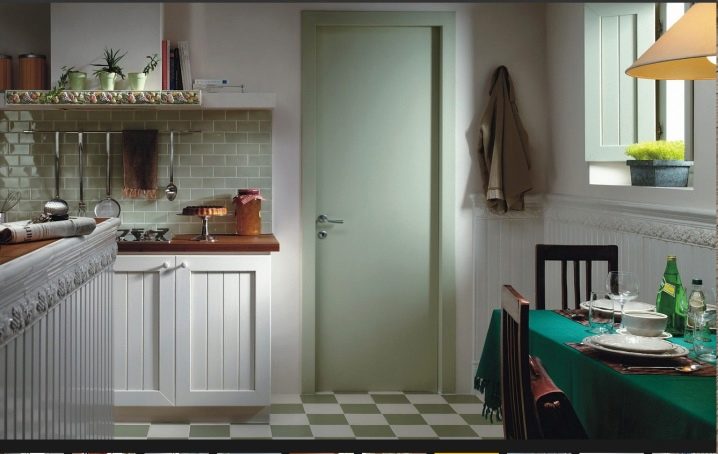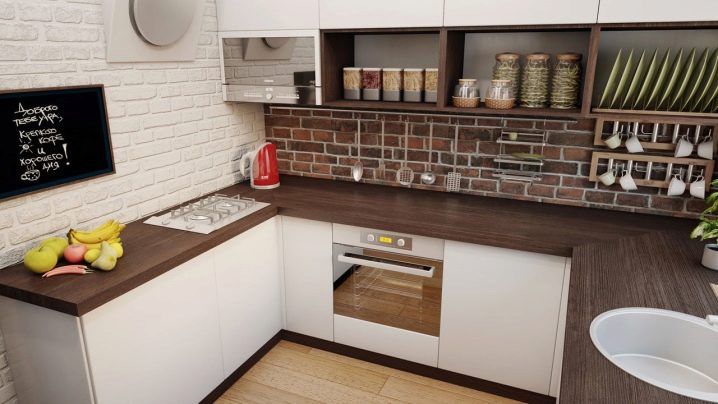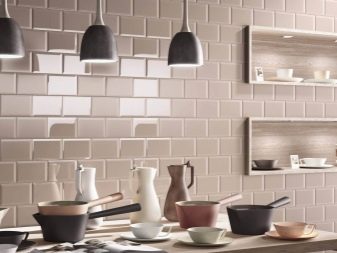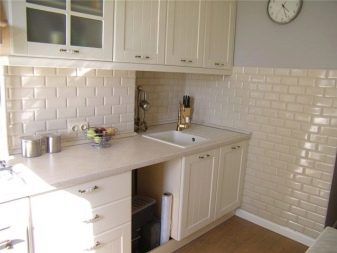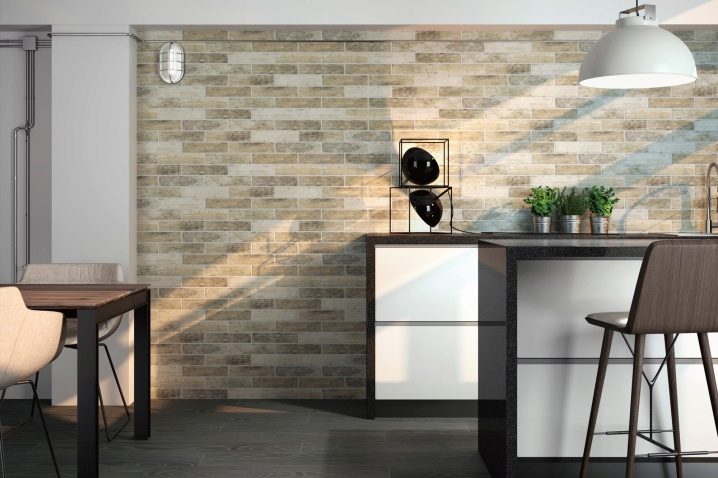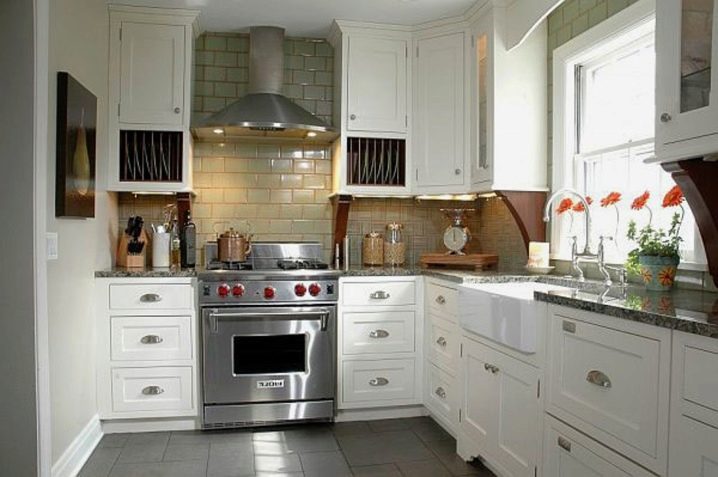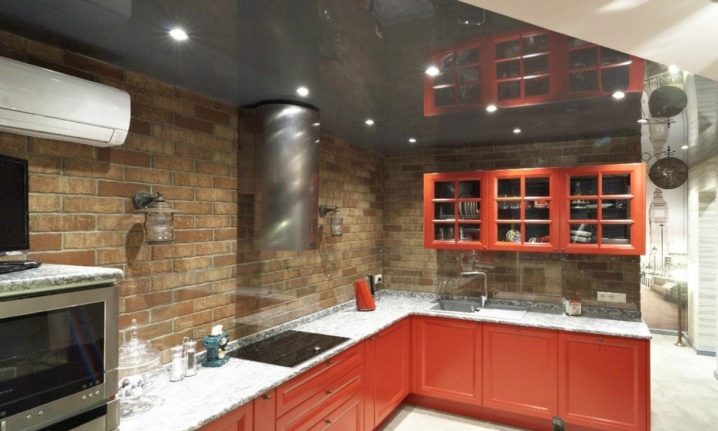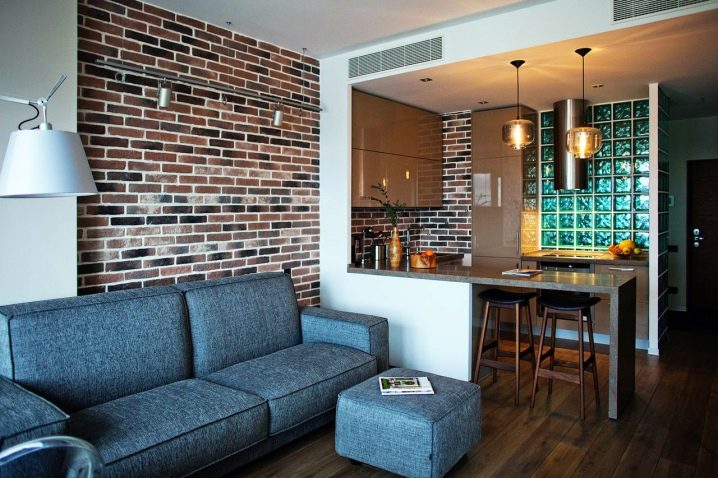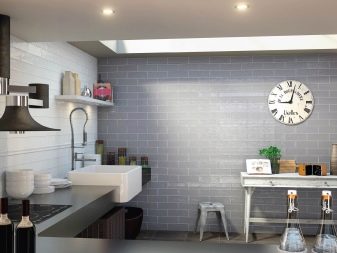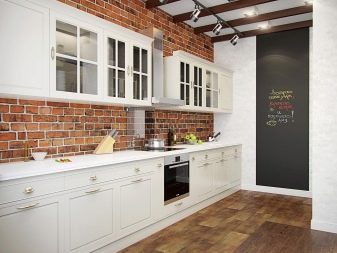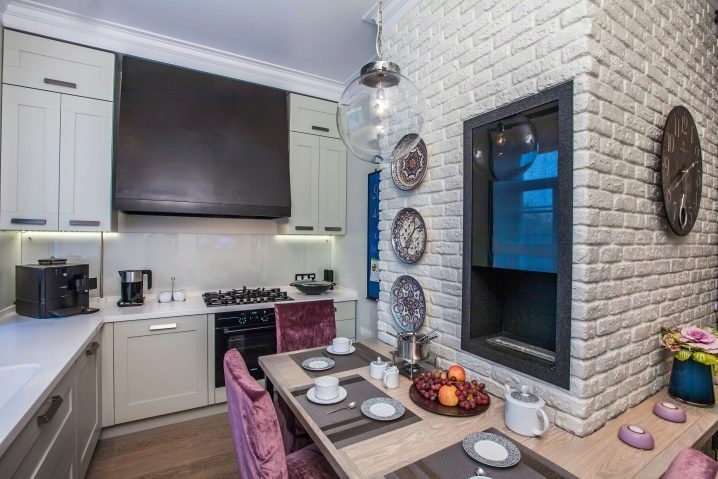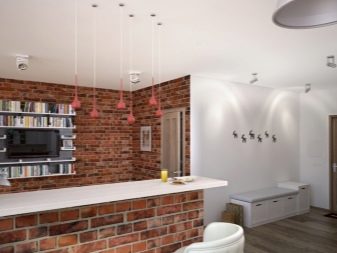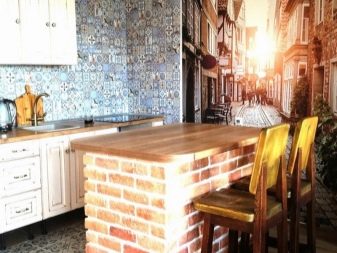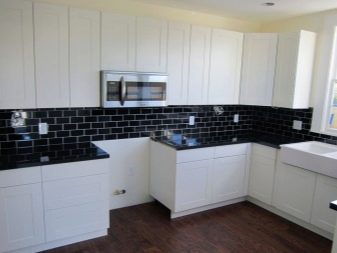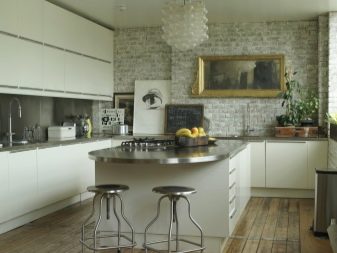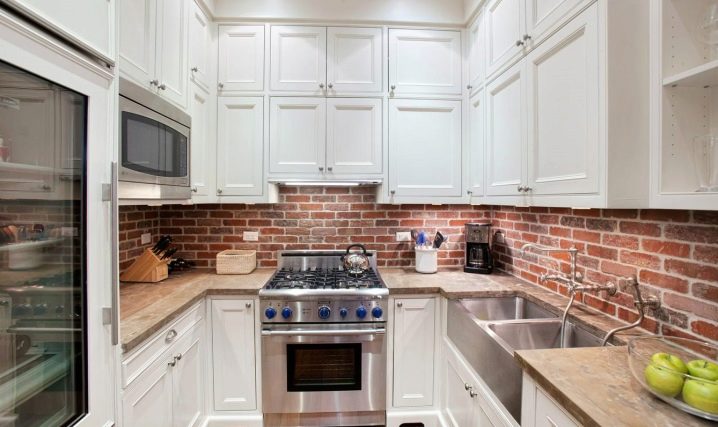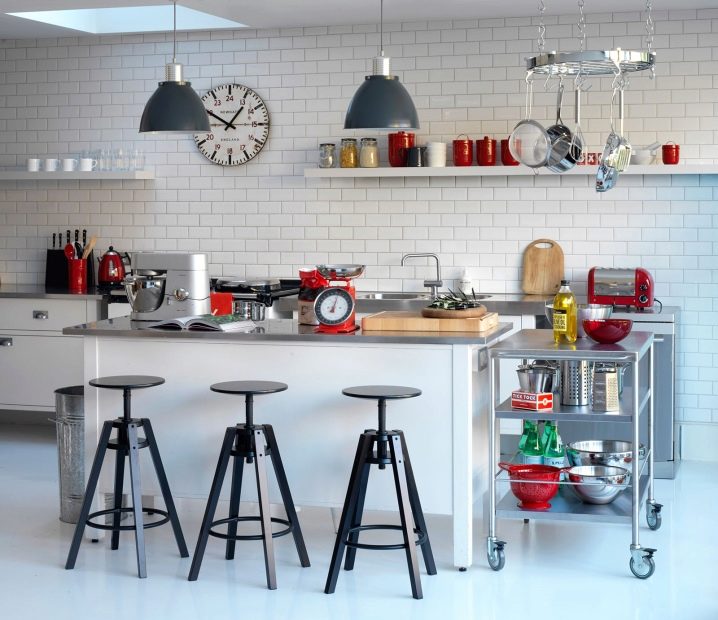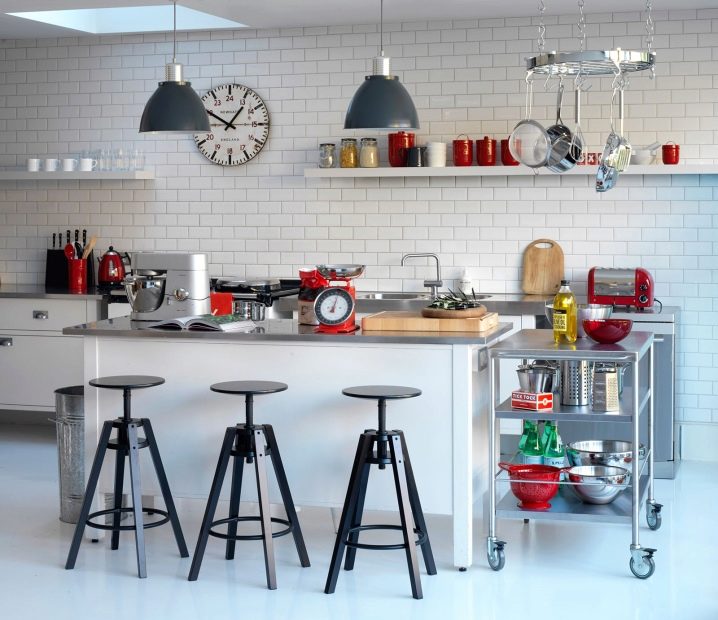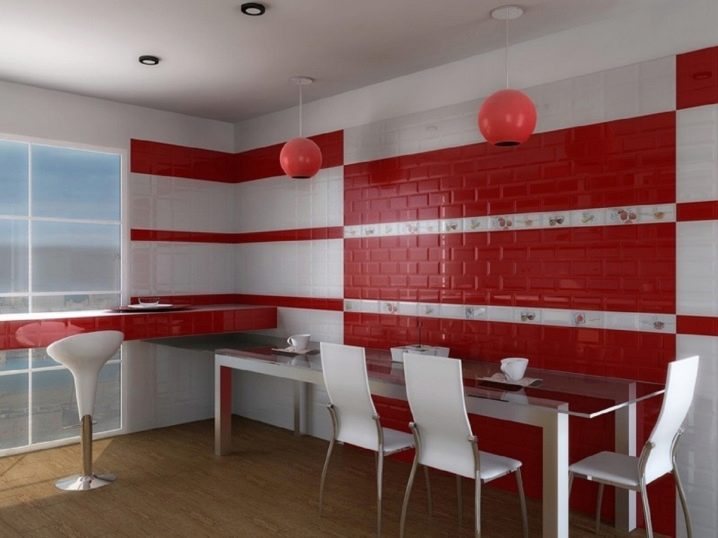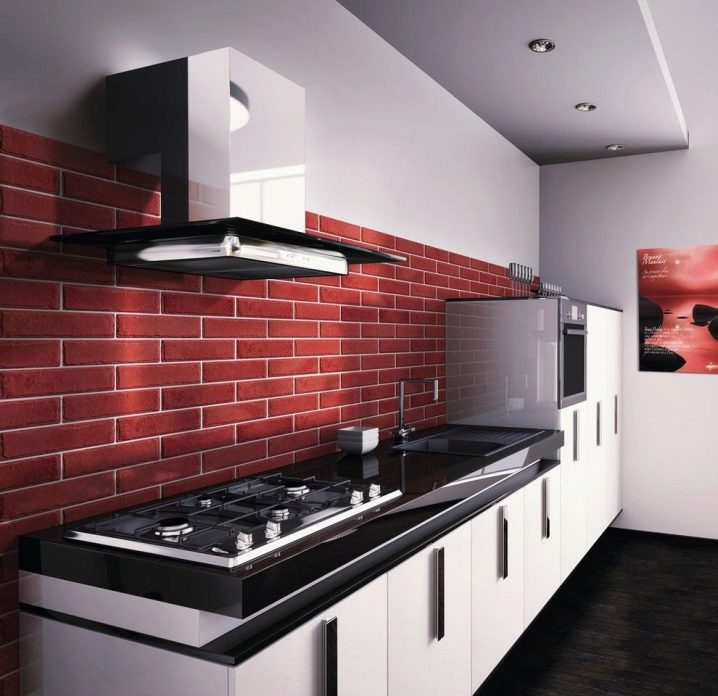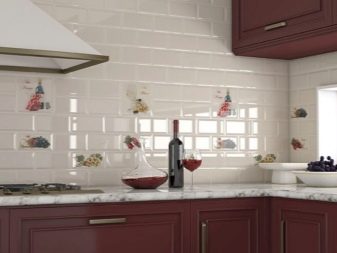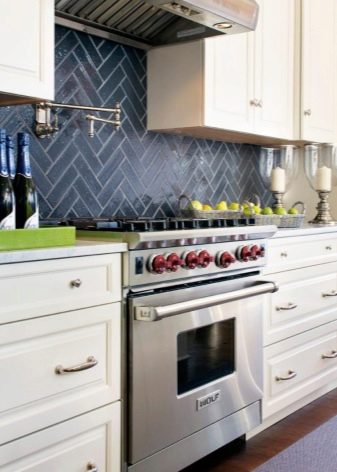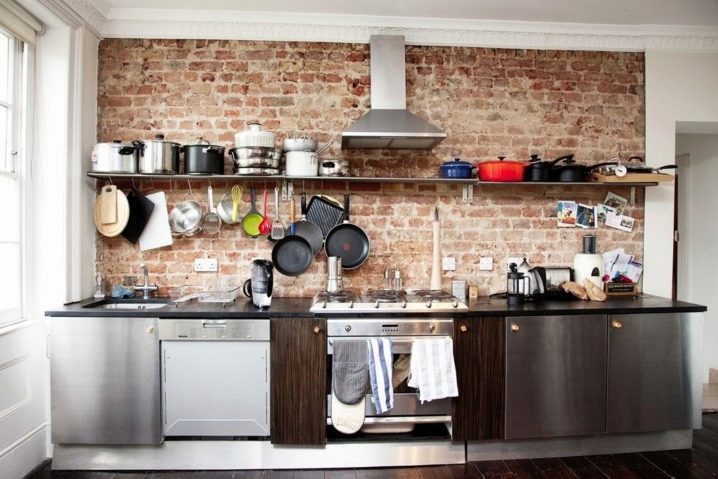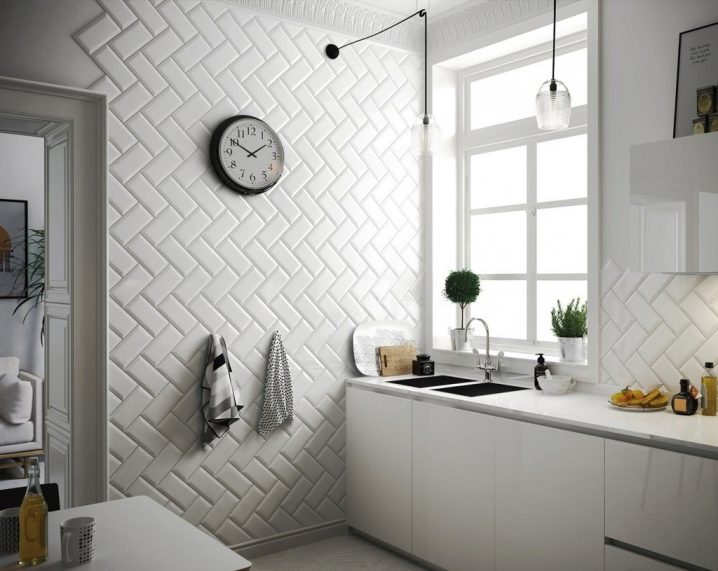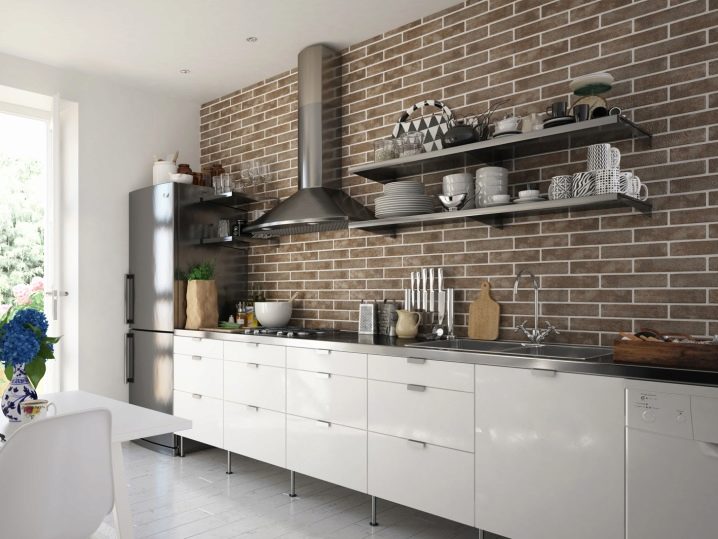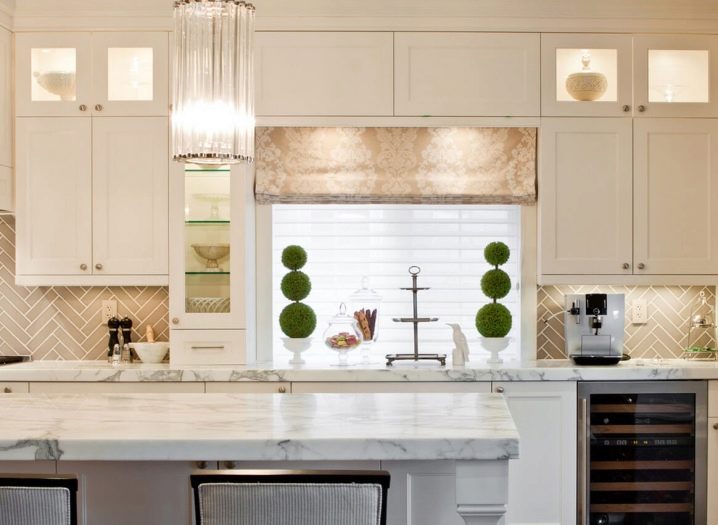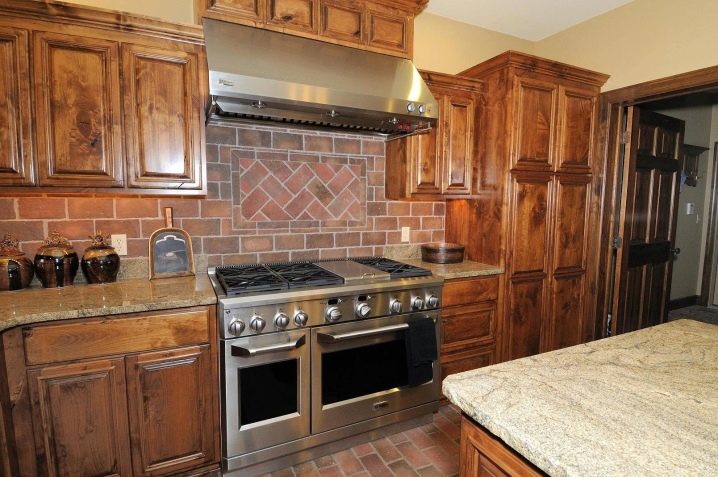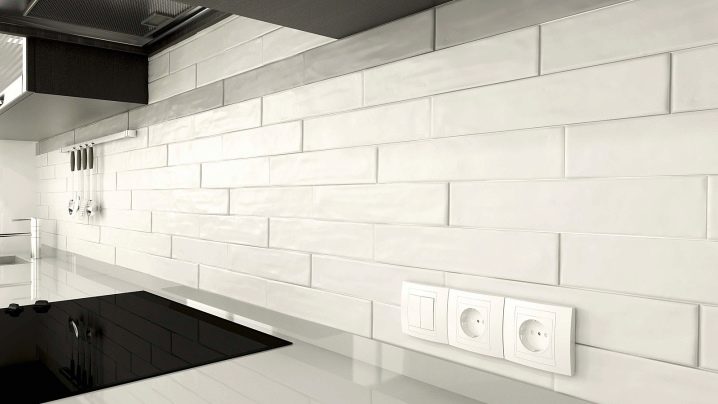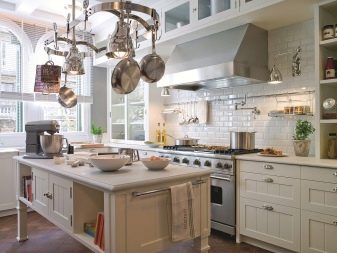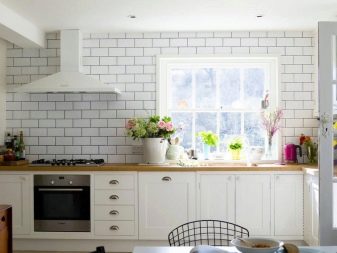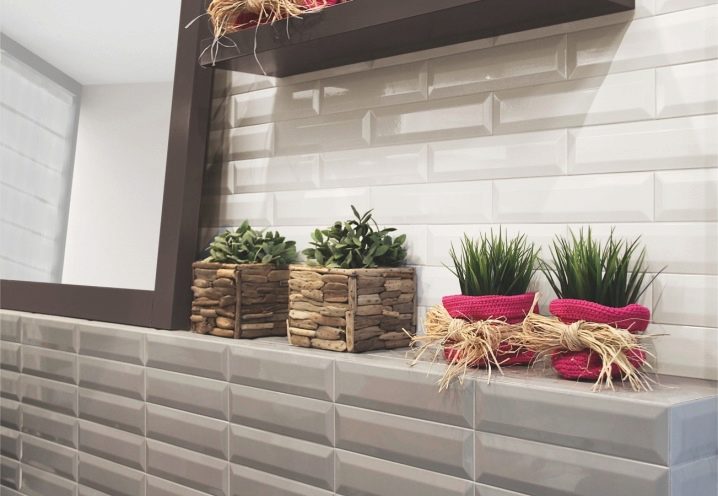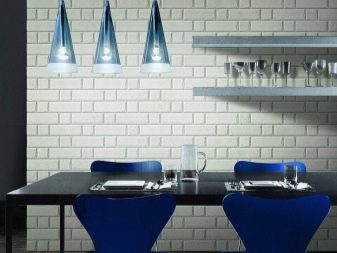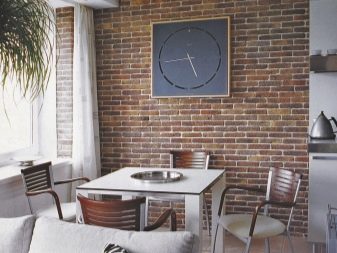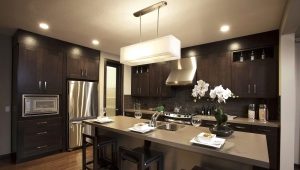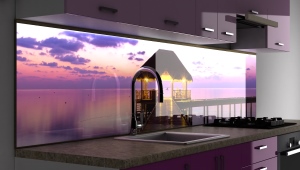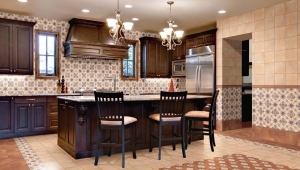Tile bricks for the kitchen
Decorative tiles "under the brick" appeared on the market about 15 years ago, initially used for cladding facades of houses. Today, the brickwork of the wall in the kitchen is considered the ideal solution for the design of the working area and not only. This design is unique and always blends harmoniously into the interior, adding to the room comfort in high-tech style. Tile bricks for the kitchen is a trend that combines versatility and extravagance. Finishing will simply and tastefully decorate the room in the spirit of fashion trends in the construction industry.
Due to the variety of material, today it is not at all necessary to use a real brick in work. For decorating the kitchen tile tiles are perfect. It can be of different sizes and shades. However, some blanks have the effect of a cracked from time to time structure of the material. In addition, the fragments can be glued both across the wall and in separate sections.
Material Features
Merits
Imitation of a brick brings a shade of a country to style, a general view at the same time looks very beautiful and impressive.
A huge choice of material allows you to choose the tone of the wall tiles as close as possible to the tone of the kitchen furniture. Large colors often change the style of design.
The texture of the material can be artificially aged, diversified, relief, imitating different chips, burned-out brick. Sometimes drawing is applied to the surface of a brick tile.
Tile is a durable material. Caring for her involves the timely removal of dirt and dust. In the care allowed the use of various detergents and chemicals.
This material can serve as a kitchen decor for several years without losing its beauty and quality. The tile is harmless, does not change color over time, is not deformed, simple in work. This allows you to upload it yourself. Facing the fireplace, stove, wall, apron or decorative wall decoration with imitation "under the brick" will give the kitchen a stylish look in the spirit of current design trends.
Working with tiles is a snap.It is easy to dismantle without complicated fixtures and tools. To decorate the surface, you need a minimum of materials and fixtures. At the same time, accuracy, accuracy and patience are of considerable importance in the work.
In addition, if one or two fragments have deteriorated in the design, they are easy to change. You do not need to remove the entire coverage. Fragments are removed from the wall and new ones are simply stuck in their place.
disadvantages
The material has a tendency to mechanical damage, so it may break during transportation. Care for clinker and gypsum will be somewhat more difficult, since the structure of materials is rough and poorly wiped.
Which one to choose?
Blanks "under the brick" are made in different ways: by the clinker method, produced from gypsum, and fired ceramics.
The most common option for cladding is a ceramic or tile. It is securely fastened to the wall, resistant to high temperature and moisture. However, it does not look like a real brick. As a rule, its surface is smooth and glossy with minimal relief. The color palette is as diverse as possible and allows you to select blanks of different colors and patterns.
The brick tile is made of clay. It has a porous structure resembling a brick.Often, in order to simplify the care of such a material, blanks are covered with a special azure. Due to the excellent indicators of strength, they are resistant to temperature extremes. A finished work are not afraid of mechanical damage. Products of this group are made in different natural shades and even white.
The plaster tile is considered the most budgetary option of dressing of kitchen. It is quite similar to a real brick, it has a similar porous structure. Pick up the shade can be close to the natural tone of the brick. Gypsum tile is able to absorb moisture. It needs frequent dismantling and processing with special means (silicone compound or polymer varnish).
Designers recommendations
The glossy tile-piglet will look bright and unusual. The material with the texture under the old stone of a natural shade will add to the style notes of country or Provence. If the kitchen is planned in a modern style, the best option for the fragments will be narrow rectangular bricks. For avant-garde style, it is ideal to use a tile with a metallic sheen in the work.
Decorating a kitchen apron with clinker will become the most versatile and safe option for decorating kitchen walls. In this case, laying the work area between the lower and upper cabinets.
Brick facing of the wall to the ceiling looks most impressive if there are no wall cupboards in the kitchen area or there is a lot of free space on the wall.
It looks harmoniously and comfortably in the design, in which the emphasis is placed on the working area or the wall near the dining table is highlighted. In this case, the space of the room is divided into a kitchen and dining room.
Tile "under the brick" you can arrange the protrusion of the ventilation duct or perform a lining niche of plasterboard. If it is located above the slab, an illusion of an old hearth is created.
Tiles often decorate the protrusions of the walls or their individual sections. Decorative bricks look great in the design of the bar, located between the kitchen area and living-dining room.
An extraordinary and stylish look will be the brickwork of a stand imitating a dining table.
In order not to overburden the kitchen with brick veneer, it is important to maintain a balance.The texture of the material has a catchy effect, so when designing kitchen areas with clinker or plaster, it is necessary to decorate a small fragment of the room. Otherwise, the style and comfort of the kitchen may be lost.
What to consider when facing?
Brick tiles are great for different types of surfaces (metal, concrete, wood, brick). Cladding can be done with jointing with or without seams.
In carrying out the work, the preparation of the walls, the availability of quality materials from proven companies and the strict adherence to the nuances of the work are of great importance.
Good and high-quality work provides design decor. This can be a schematic drawing, which put the subtleties of work.
It is important to calculate the required amount of material and take a tile with a small margin of 10% of the required quantity. This is due to the fragility of the fragments.
Before starting the work, the material is adjusted in size, checked for the coincidence of the tone, its working surface is moistened and cleaned from dust.
When working tile adhesive must be fresh and uniform. It should be applied to the wall evenly level with a notched trowel.The tile is pressed in with a pivoting movement. In the case of facing with jointing, it is necessary to observe the distance between the fragments. To do this, use special pegs and crosses.
At the end of the work, the finished surface is treated with a special compound that gives the lining a more saturated color. In addition, this treatment will make it easier to care for the working area, and the seams (if any) will be much less polluted.
Ways of facing
In order to determine the best option for laying tiles on the wall, you need to take into account its shape and room dimensions. The most convenient way is considered the basic lining. It has a number of its advantages and allows different options on its basis.
In the process, each brick lay parallel to the floor, tightly applying to each other. This method looks the most advantageous to create a popular loft style.
Facing diagonally is more complicated than a simple basic method, but it gives a more interesting effect to the design.
The “run-up” method is today one of the most popular design options for kitchen walls. It is universal and great for all types of ceramic tiles.To create such a cladding, fragments are laid with an offset. Each brick should be located exactly in the middle of the seam that separates the parts in the previous row. This way the tiles are laid parallel to the floor.
For lovers of unusual designs perfect brick veneer kitchen "herringbone". This method resembles the laying of parquet. It is often performed in rooms with uneven and non-parallel walls.
It is possible to decorate with brick tile areas, combining different ways of laying. This method is called “pattern combination.” For example, the upper section of the wall can be performed by the “run-up” method, and the lower one - according to the basic variant.
In any of the ways it is important to observe accuracy, timely remove excess glue and check the work of the building level, correcting errors.
If the tile lay unevenly until the glue is dry, you can remove it, clean the adhesive layer and put the blank again.
Facing the apron and walls
- You can lay tiles on the entire area of the working area of the apron.
- It looks interesting design when the tile is located only in the area of the plate and sink.
- Often the lining covers not only the working area of the apron, but also the lower part to the floor.
- Sometimes the design approach allows styling of fragments of different shades or patterns.
- For decorative purposes, tile tiles are often laid out on a free wall, the mezzanines and walls under the window are decorated. With a harmonious and appropriate choice of material, you can perform the cladding in the form of a wall with a window, as an imitation of which use wallpaper.
